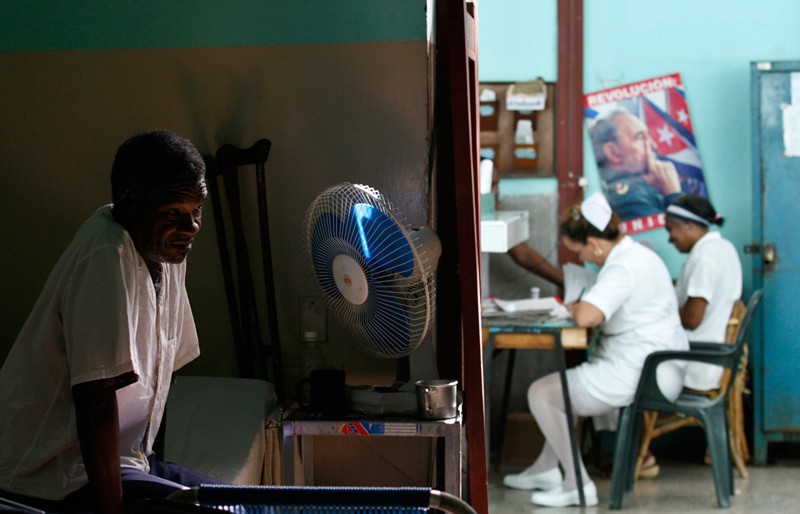Since the late 1990s, the number of countries contributing clinical-trial data used by the US Food and Drug Administration (FDA) to approve drugs has nearly doubled (see ‘Going Global’). Yet this global expansion of study locations has not been accompanied by a similar increase in the racial diversity of those enrolled. In 1997, 92% of participants in these trials were white; In 2014, we found that this figure was still around 86%.
A growing body of literature indicates that the effectiveness of a drug, the likelihood of its side effects, and the nature of those effects may all differ among people of different ancestry. And funders and researchers have repeatedly said that clinical trials should include more participants from ethnic minorities. Indeed, 25 years ago the US National Institutes of Health Revitalization Act called for more people from ethnic minorities to be included in clinical trials.
In our view, drug developers should take advantage of the global expansion of clinical-trial locations to design studies that over-represent the world’s population.
data check
To understand which populations provide drug safety and efficacy information used by the FDA, we reviewed the approvals made by the agency at five time points from 1997 to 2014.
For each approval, we documented the reported race of those involved in the clinical trial. and the country where the test was conducted. (All were major efficacy trials, generally the most definitive demonstration of a drug’s efficacy and safety.) We focused only on the ‘white’, ‘black’, ‘Asian’ and ‘other’ categories, as reporting for these was a was similar. country.
Data for ethnicity, such as Hispanic or non-Hispanic people, were confounded by reporting discrepancies and were therefore omitted from the analysis.
We focused on the treatment of heart disease, cancer and disorders of the central nervous system (CNS); Of the drug approvals made in the period 1997 to 2014, 41% were for these common global health problems2. We assessed FDA approvals because many countries follow the agency’s lead in making their own regulatory decisions.
During the five years we evaluated (1997, 2004, 2009, 2012 and 2014), 81 drugs for heart disease, CNS disease and cancer received FDA approval based on clinical trials involving approximately 150,000 people. did (see Supplementary information).
Twenty-nine countries contributed clinical-trial data in each of the years assessed. For Eastern Europe, Asia-Pacific, Latin America and the Caribbean, representation increased over the study period (see ‘Going global’). We have classified the regions according to the UN regional groups.
At five time points, the racial makeup of clinical trials remained relatively constant (see ‘Going Global’). The average percentage of African and African American participants per trial ranged from 1.8% to 3.5%. For Asian participants, the range was 0% to 7%; For any group described as undecided or white, black or Asian, it ranged from 1.4% to 3.4%. For context, according to the US Census, 72.7% of the US population was non-Hispanic white in 1997 and as of 2014 the figure was 62.2%.
Also, as of 2015, about 75% of the global population lived in Asia or Africa. Of course, there are limitations to our analysis. The ideal mix of race and ethnicity will vary from country to country; We compared trial demographics to the US population because we used FDA-assessed trial data.
Change place
There are several possible reasons why the diversity of trial participants is not increasing with the expansion of the countries contributing trial data. It is likely that fewer people are enrolling in trials or that fewer tests are being conducted in countries that have recently started contributing data.
None of our interactions with drug developers suggest that the goal of including greater population diversity in clinical trials is driving the change in where trials are being conducted.
We think the sharp increase in the number of countries contributing clinical-trial data (from 32 in 1997 to 57 in 2014) is driven by two main factors.
The first is a growing shortage of people from developed economies who are eligible for clinical trials. Richer countries are better able to adopt new treatments in standard care than poorer countries.
So many patients in the United States and Western Europe now have access to a variety of drugs outside the clinical-trial setting. The paucity of people with a special condition who are not already taking the drug – ‘treating na रोगियोंve patients’ – has prompted drug developers to start recruiting overseas.
The second factor is low cost. In North America and Western Europe, hospitals and other care centers charge drug developers much more to host clinical trials than equivalent institutions in Eastern Europe and Asia.
